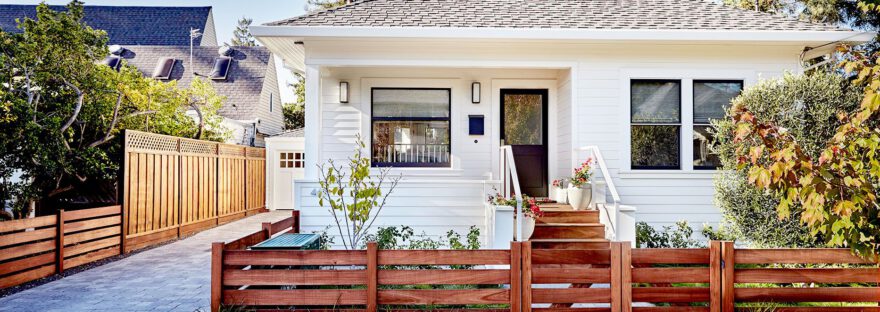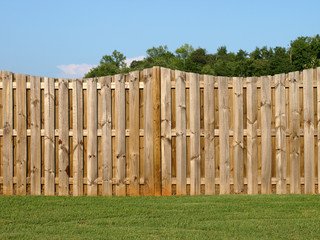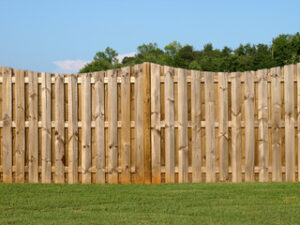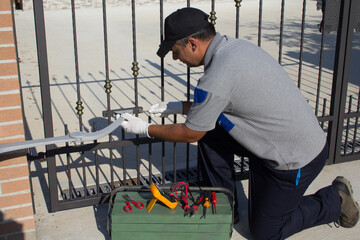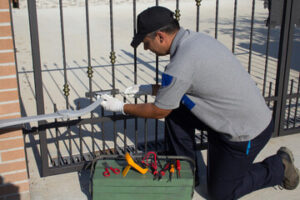Maisey Fence LLC is a human-constructed barrier made of boards, masonry, or rails to enclose and secure parcels of land. It is distinguished from tarpaulins, scrap material, and hedges.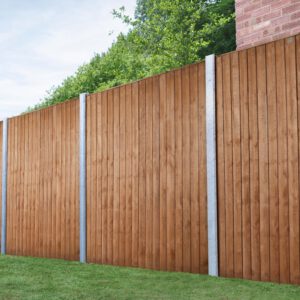
A wood plank stacked horizontally makes for an elegant fence that confidently asserts its boundaries. This modern fence idea takes many of the same elements as other wooden fencing styles but uniquely combines them.
If you want to make your home fence more beautiful and unique, consider adding a planter. This will allow you to grow flowers and other plants to beautify your property. You can choose from various flower planters to add to your fence, depending on the flower you want to grow or your preference for color and design.
For example, you can use a metal hanging planter that will easily hang from your home’s railing. You can also opt for a metal wall-mounted planter, which is perfect for urban spaces where space is limited. These planters have a unique style that will make your home stand out, and they are easy to install as well.
Another good option is a concrete fence planter. This type of planter is ideal for pools and lounge areas, as it will create a privacy screen that will protect these areas from prying eyes. You can also plant a variety of greenery in this planter, which will blend in with your garden and make it look more elegant and sophisticated.
To build your own concrete fence planter, you will need some simple tools and materials. First, you will need to build the frame of your planter. To do this, you will need two 2×6 boards for the sides of your planter, and one 18″ fence picket that will be ripped lengthwise. You will then nail these pieces together, making sure to position them so that the feet of the planter are protruding out from the bottom of the box.
Once you have the frame of your planter, it’s time to add the soil and plants. It’s important to choose a deep, well-draining soil for the planter. You will also want to choose hardy, evergreen plants that are tolerant of the sun and shade. If you want to use a mix of colors, select plants with contrasting leaves and blooms.
To complete your project, you will need a chain and eye hooks. To create the hook holder, you will need to cut the top piece of your planter so that it’s the same length as the fence cap and the desired height of the planter. Then, you will need to drill a hole in the center of each end piece and on the underside of the short lip where you want the chain to hang from.
Thin Metal Fence
A thin metal fence offers the same privacy benefits as a solid wood or chain-link fence, but it doesn’t need periodic staining and painting. Most commonly, it’s made of aluminum or steel. Both are durable and long-lasting, and they’re available in a wide variety of styles that include latticework, grid industrial and modern panel fencing. Some metal fences also reflect sound, which can be helpful for businesses that want to keep exterior noise from disturbing neighbors or customers.
A metal fence’s finish is another important factor to consider. While wrought iron offers an elegant look that develops a gorgeous patina over time, you can find a similar style in hollow aluminum or steel. Both types of metal require relatively little maintenance, though rusting can occur if not protected.
Home centers and some fence suppliers offer prefab tubular-aluminum fences that snap together. These can be installed by an experienced DIYer, although a pro is the best choice for digging holes and pouring concrete for posts. If you’d like to go with a more traditional look, choose an aluminum or steel fence with decorative pickets. Both are strong enough to support the decorative elements, and their smooth surfaces resist dents and scratches better than wood or vinyl.
Wrought iron and solid steel are other common choices for metal fencing, but they’re often more expensive than aluminum. Wrought-iron fences aren’t as sturdy as aluminum, and they can rust easily. They’re also more likely to require a professional installer because they require a high level of craftsmanship. Solid-steel fences also weigh 50 pounds per linear foot, requiring heavy equipment to hoist them up.
A wire fence is the most affordable type of metal fence and works well for keeping animals in or out of gardens or other parts of the yard. It’s usually just simple wire strung between posts, but other types of wire fence are available, including chicken wire, hog wire and razor wire. If you need a wire fence, consider going with galvanized steel so it’s resistant to corrosion. Whatever type of thin metal fence you select, make sure it coordinates with the colors and designs of any nearby outdoor features, such as a gazebo or other structure.
Vertical Wood Fence
A wood vertical fence can add an attractive feature to your garden. It can also add privacy and deter intruders from gaining access to your property. However, you should consider the pros and cons of this type of fence before making a decision. The biggest issue with wood fences is moisture ingress, which can lead to rot and weakened boards. While moisture can be addressed through regular inspections and sealing, this does not completely eliminate the problem. Wood that comes into direct contact with the ground is particularly susceptible to this problem, which means that vertical wood fences are more likely to deteriorate than other types of fences.
If you choose a wood fence, the best option is to go for one made from cedar or another durable and water-resistant material. Pine is less expensive, but it may not hold up as well against the elements and should only be used in areas with mild climates. Cedar, on the other hand, is an excellent choice for wet climates and will last much longer than pine.
A wooden slat fence is also easy to repair and replace as you can simply remove the damaged board. Its horizontal lines can also make your garden appear wider and can help to create a more modern look. However, a slatted fence is not suitable for every garden and can be difficult to build and install.
Wooden slat fences are typically built from pre-built panels that are slotted into fence posts and rails. While this saves time and money, it does not offer the same flexibility that a bespoke wooden fence can provide. In addition, a slatted fence can be more susceptible to weather damage and the wooden boards aren’t as strong as those on a composite fence. This means that a slatted fence will need to be treated more frequently and will require more maintenance than a composite one. However, this can be offset by using an eco-friendly and durable composite fencing such as ours.
Metal Wire Mesh Fence
Whether you want to delineate property lines, build a garden enclosure or keep animals out of the yard, a metal wire mesh fence is an affordable and versatile choice. The metal material can be bent and manipulated to fit any landscape or building design, and it’s also sturdy enough to withstand harsh weather conditions for years. Moreover, wire fencing is easier to work with than most other types of fencing materials, which can reduce construction time and help your project remain on budget.
There are several different types of metal wire mesh fencing available, including welded, woven and galvanized. Woven wire fencing is made from an array of intersecting steel wires that are woven over and under each other. The wires are then tied together to create a strong and durable material that’s ideal for a variety of applications. Woven wire fencing is available in a range of heights, gauges and grid patterns. The material is also available in galvanized and PVC-coated varieties.
Welded wire mesh is made from steel wires that are electrically welded to form a solid and rigid material. The welded wire mesh panels can be galvanized before or after welding. Welded wire fencing is typically used on commercial and industrial projects. It can be found in the form of a temporary fence or a permanent demarcation system.
Another type of wire mesh is a chain-link fence, which has a series of links that are linked together and then coated with zinc to protect them from corrosion. The wires of a chain-link fence are also tin-plated to increase their durability and longevity. Depending on the type of wire, a tin-plated wire may be more resistant to corrosion than a galvanized or welded wire.
There are also specialized metal mesh fence materials that are used in more specific applications. These include copper, stainless steel and other alloys. Stainless steel is an excellent choice for marine environments because it’s resistant to corrosion and rust. Copper wire is also an excellent option because of its unique electrical and thermal conductivity. In addition to its superior tensile strength, it has an attractive sheen and is durable.

